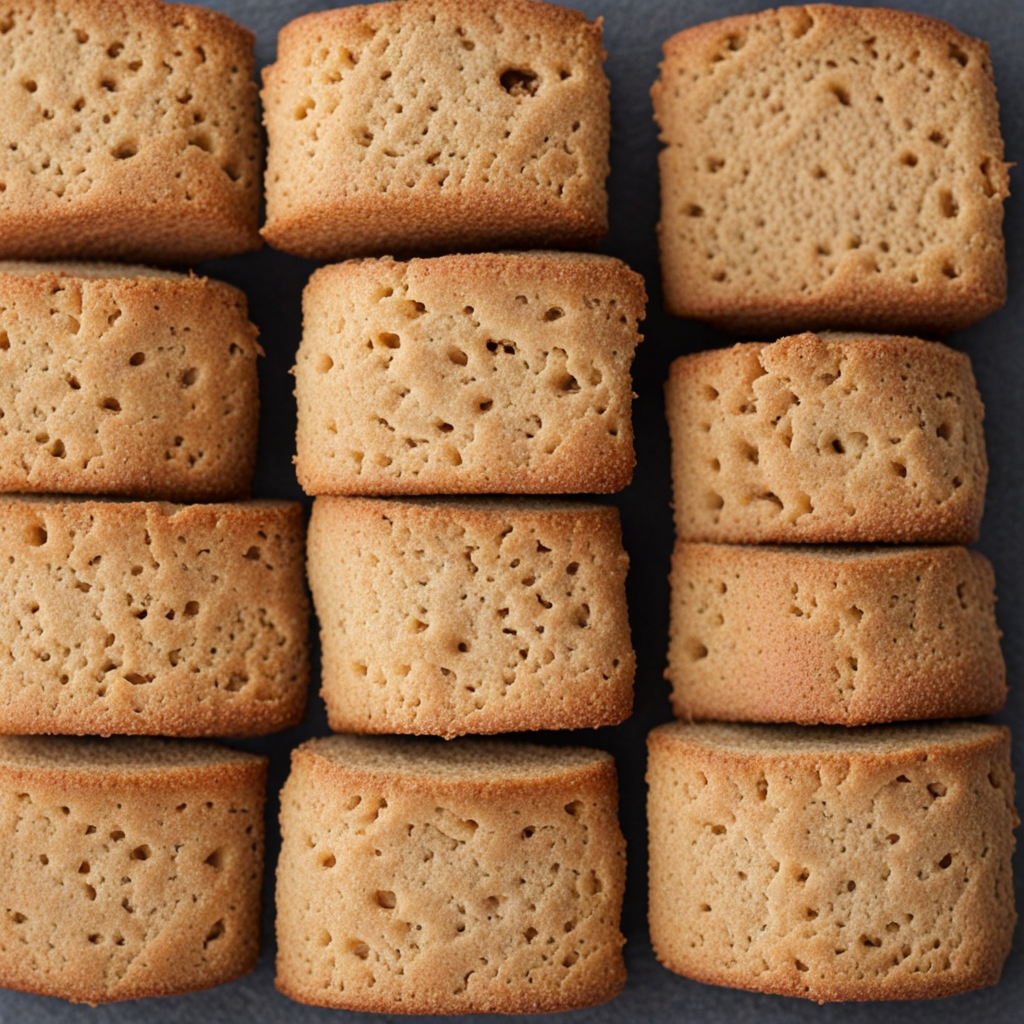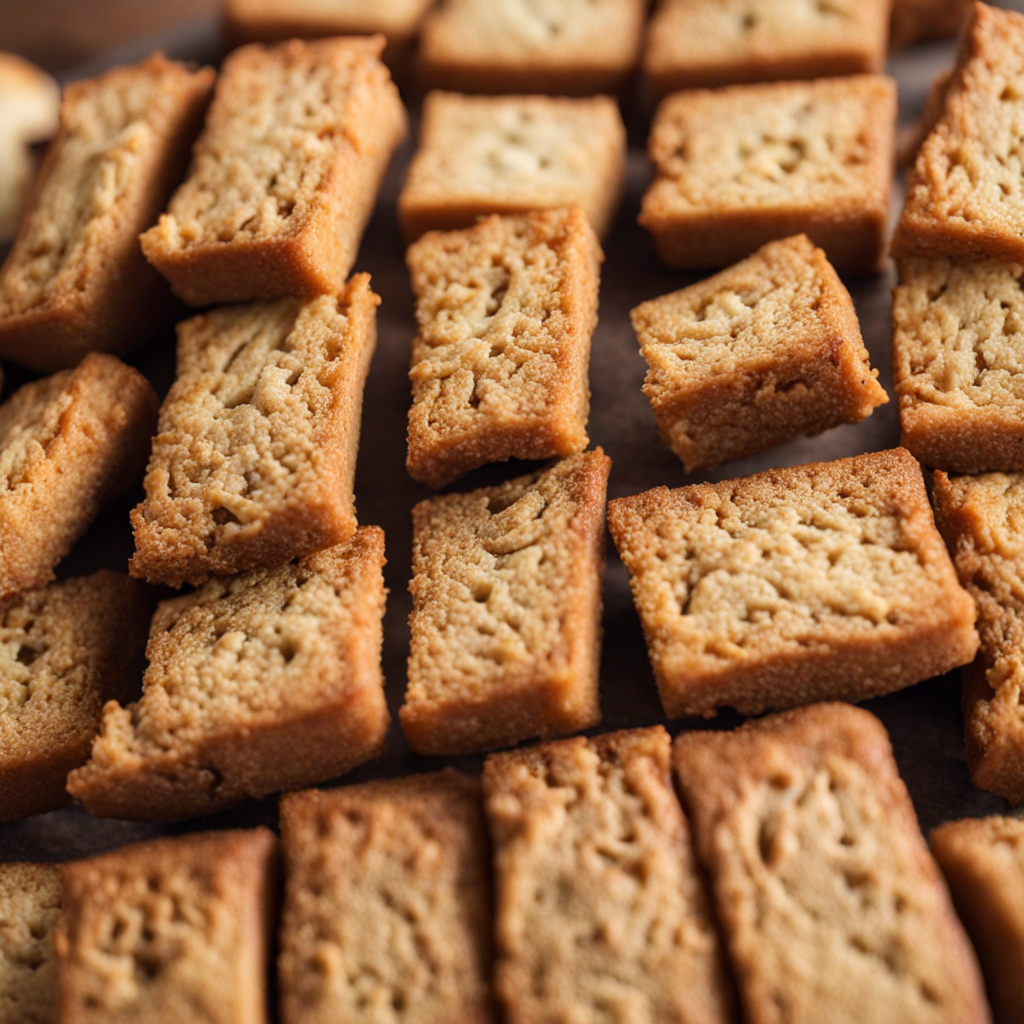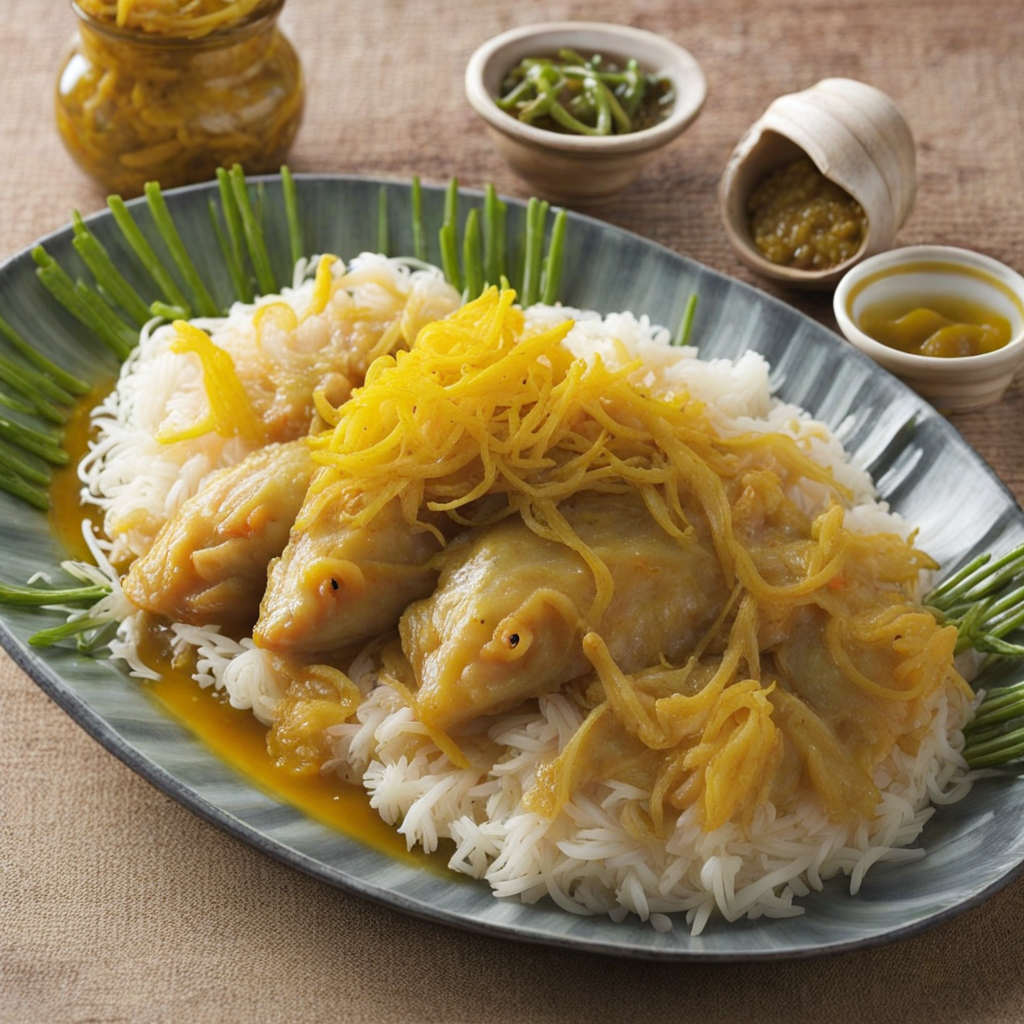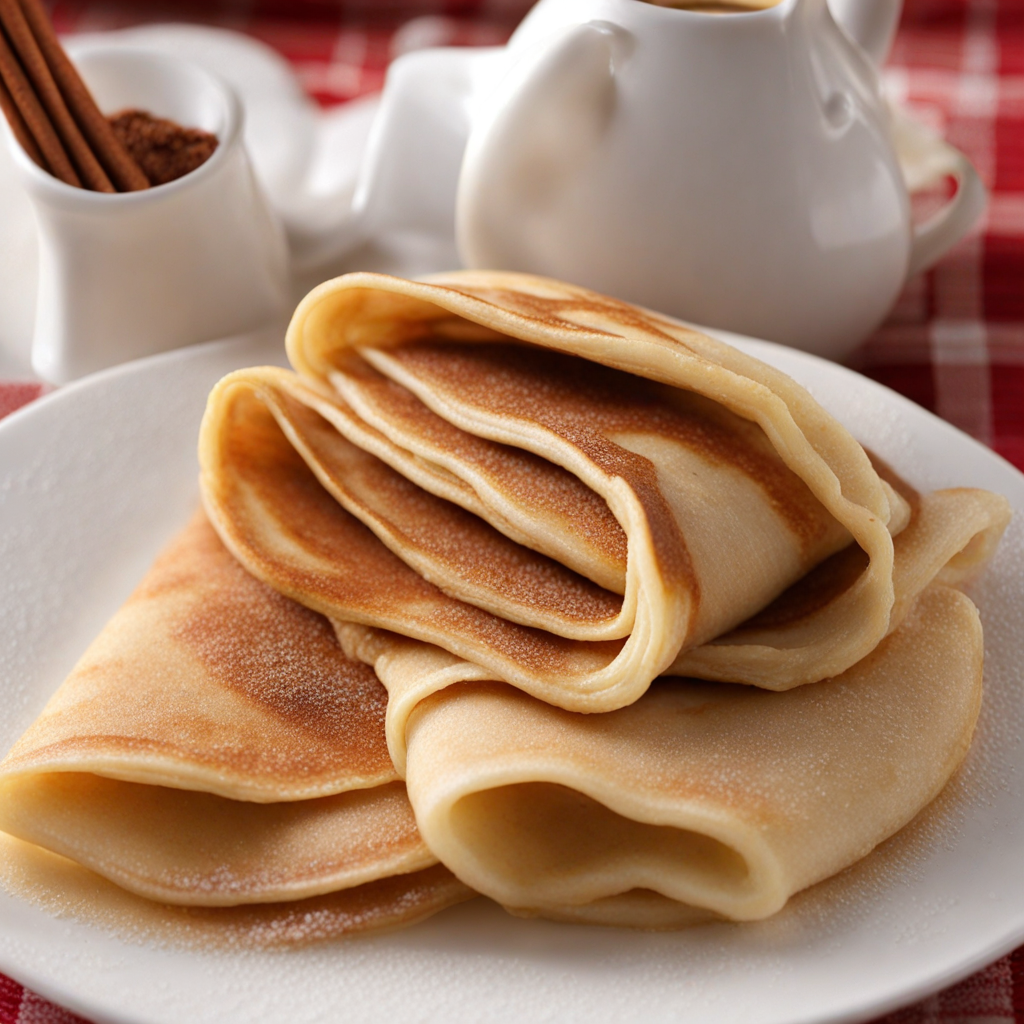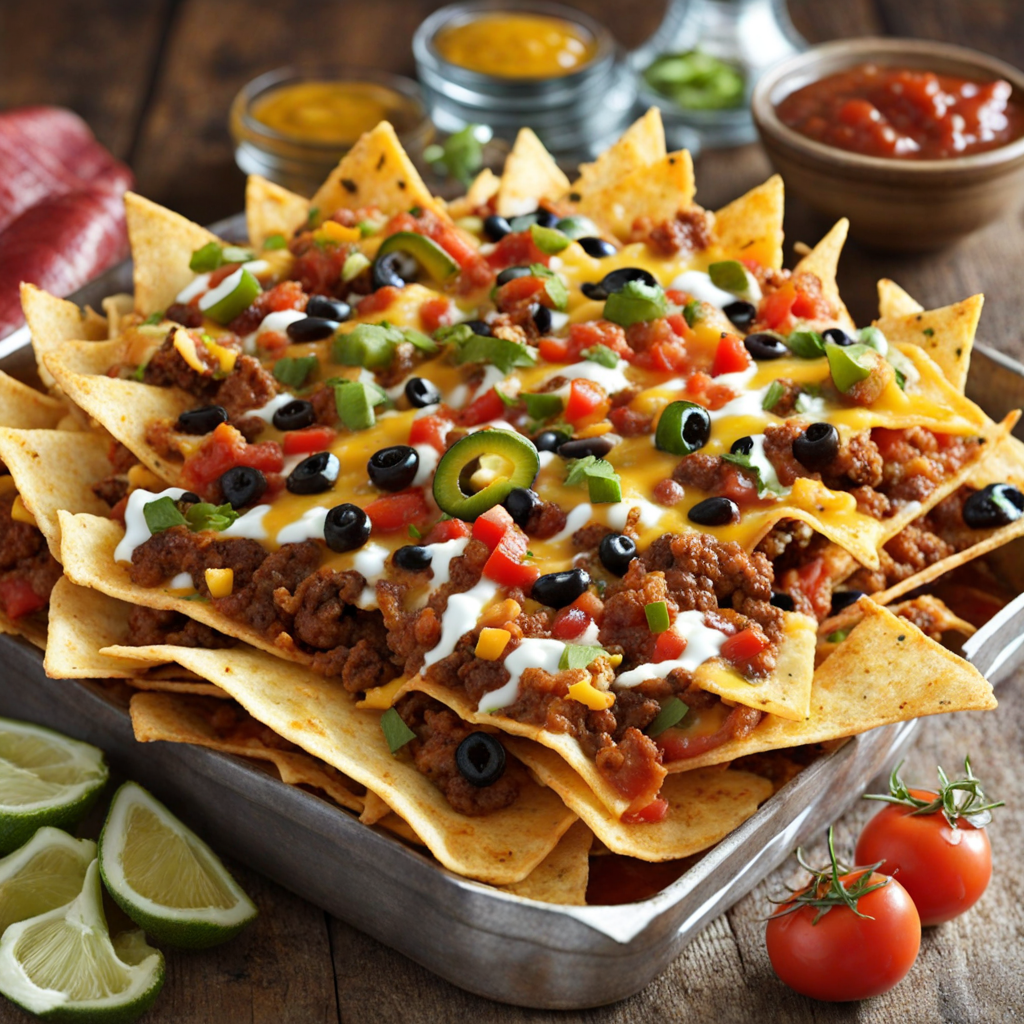Ouma Rusks
Ouma Rusks are a beloved South African treat that beautifully blend tradition and flavor. These twice-baked biscuits are known for their crunchy texture and are typically made from a mixture of flour, sugar, baking powder, and buttermilk, along with various flavorings such as aniseed, cinnamon, or even nuts and seeds. The result is a delightful, sturdy rusk that stands up to dipping, making them perfect for enjoying with coffee or tea. Each bite offers a satisfying crunch followed by a slightly sweet and buttery flavor, making them an ideal companion for a leisurely breakfast or afternoon snack. The preparation of Ouma Rusks is steeped in family tradition, often passed down through generations. Once the dough is formed, it is shaped into logs and baked until golden brown. After cooling, the logs are sliced into thick pieces and baked again, ensuring they are dry and crisp. This double-baking process not only enhances the texture but also intensifies the flavors, creating a unique taste experience that is both comforting and nostalgic for many South Africans. The rusks can be enjoyed plain or with various additions like raisins or chocolate chips, allowing for a delightful twist on the classic recipe. Ouma Rusks are more than just a snack; they are a cultural symbol that evokes memories of home and family gatherings. Whether enjoyed as a quick breakfast with a cup of coffee or savored during a leisurely afternoon, these rusks offer a taste of South Africa's rich culinary heritage. Their versatility means they can be paired with spreads like butter, cheese, or even jam, enhancing their flavor profile and making each experience unique. For anyone looking to expand their palate, Ouma Rusks are a delicious and intriguing introduction to South African cuisine.
How It Became This Dish
Ouma Rusks: A Delicious Slice of South African Heritage #### Origins Ouma Rusks trace their roots back to the early European settlers in South Africa, particularly the Dutch settlers known as the Boers. In the 17th century, these settlers brought with them a wealth of culinary traditions, including the concept of drying bread to create a hard, durable snack that could withstand the harsh conditions of travel and storage. The practicality of rusks made them an ideal food for pioneers and farmers working in the rugged landscapes of the South African hinterland. The term "rusk" itself derives from the Middle Dutch word "roost," meaning "to dry." The original rusks were simple, twice-baked breads that could be made from basic ingredients like flour, water, and salt, which were accessible to the settlers. This baking method, designed to extend shelf life, was crucial for a community that faced long journeys and limited access to fresh food. #### Transformation and Cultural Significance As time passed, the humble rusk evolved into a beloved staple in South African households, particularly among the Afrikaans-speaking population. Ouma Rusks, which translates to "Granny Rusks," embodies a sense of nostalgia and familial warmth. The name itself evokes memories of grandmothers baking in their kitchens, imparting love and tradition into each batch. In the early 20th century, Ouma Rusks began to take on a more defined identity. While traditional recipes varied regionally, the basic formula remained the same: a combination of flour, baking powder, buttermilk, sugar, and sometimes anise seeds or other flavorings. The dough would be shaped into logs, baked, sliced, and then baked again until dry and crunchy. This twice-baking process not only enhanced the rusk’s shelf life but also developed its signature texture, which is both crumbly and satisfying. The cultural significance of Ouma Rusks extends beyond mere sustenance; they are woven into the fabric of South African social life. Traditionally enjoyed with tea or coffee, rusks are a common accompaniment during breakfast or as a snack throughout the day. They are often served to guests as a welcoming gesture, symbolizing hospitality and warmth. Furthermore, the act of dunking the rusks into a warm beverage has become a cherished ritual for many South Africans, creating moments of connection and comfort. #### Commercial Development The commercial production of Ouma Rusks began in the mid-20th century, driven by the growing popularity of the snack. In 1939, the Ouma brand was established by a family in the Western Cape, and it quickly became synonymous with quality rusks. The brand was named in honor of the founders' grandmothers, who had inspired the original recipes. Through effective marketing and a commitment to using high-quality ingredients, Ouma Rusks gained notoriety across South Africa, transforming from a homemade treat into a household name. As urbanization increased in the latter half of the 20th century, the demand for convenience foods rose. Ouma Rusks adapted to these changing consumer preferences, maintaining traditional recipes while also introducing new flavors and variations. Today, one can find an array of Ouma Rusks, including variants like buttermilk, fruit, and even health-conscious options that incorporate oats and seeds. Such adaptations have allowed Ouma to remain relevant in a fast-paced modern society while continuing to honor its heritage. #### Cultural Legacy The legacy of Ouma Rusks continues to be celebrated in contemporary South Africa. They have become emblematic of the country's rich culinary landscape and are often featured in local markets and festivals. The rusks are not merely a snack; they embody the spirit of South African resilience, creativity, and cultural amalgamation. Moreover, Ouma Rusks have crossed international borders, capturing the attention of food enthusiasts and expatriates. Many South Africans living abroad cherish the opportunity to share Ouma Rusks with friends and family, introducing them to a taste of home. This global reach underscores the universal appeal of the rusk as an enduring symbol of comfort and nostalgia. In recent years, the rise of artisanal baking has also influenced the Ouma Rusk market. Small-scale bakers have begun experimenting with traditional recipes, incorporating local ingredients and innovative flavors. This trend not only honors the original rusk but also revitalizes the food culture surrounding it, encouraging a new generation to appreciate its history and significance. #### Conclusion Ouma Rusks are more than just a crunchy snack; they represent a rich tapestry of South African history, culture, and community. From their humble beginnings as a practical food for early settlers to a beloved national icon, rusks have evolved while staying true to their roots. They evoke memories of family gatherings, warm kitchens, and the comforting rituals of sharing food with loved ones. As South Africa continues to change and grow, Ouma Rusks remain a steadfast reminder of the nation’s culinary heritage. They invite everyone to partake in a tradition that celebrates connection, resilience, and the simple joys of life. Whether enjoyed during a leisurely breakfast or shared with friends over a cup of tea, Ouma Rusks will forever hold a special place in the hearts of many South Africans and food lovers around the world.
You may like
Discover local flavors from South Africa


